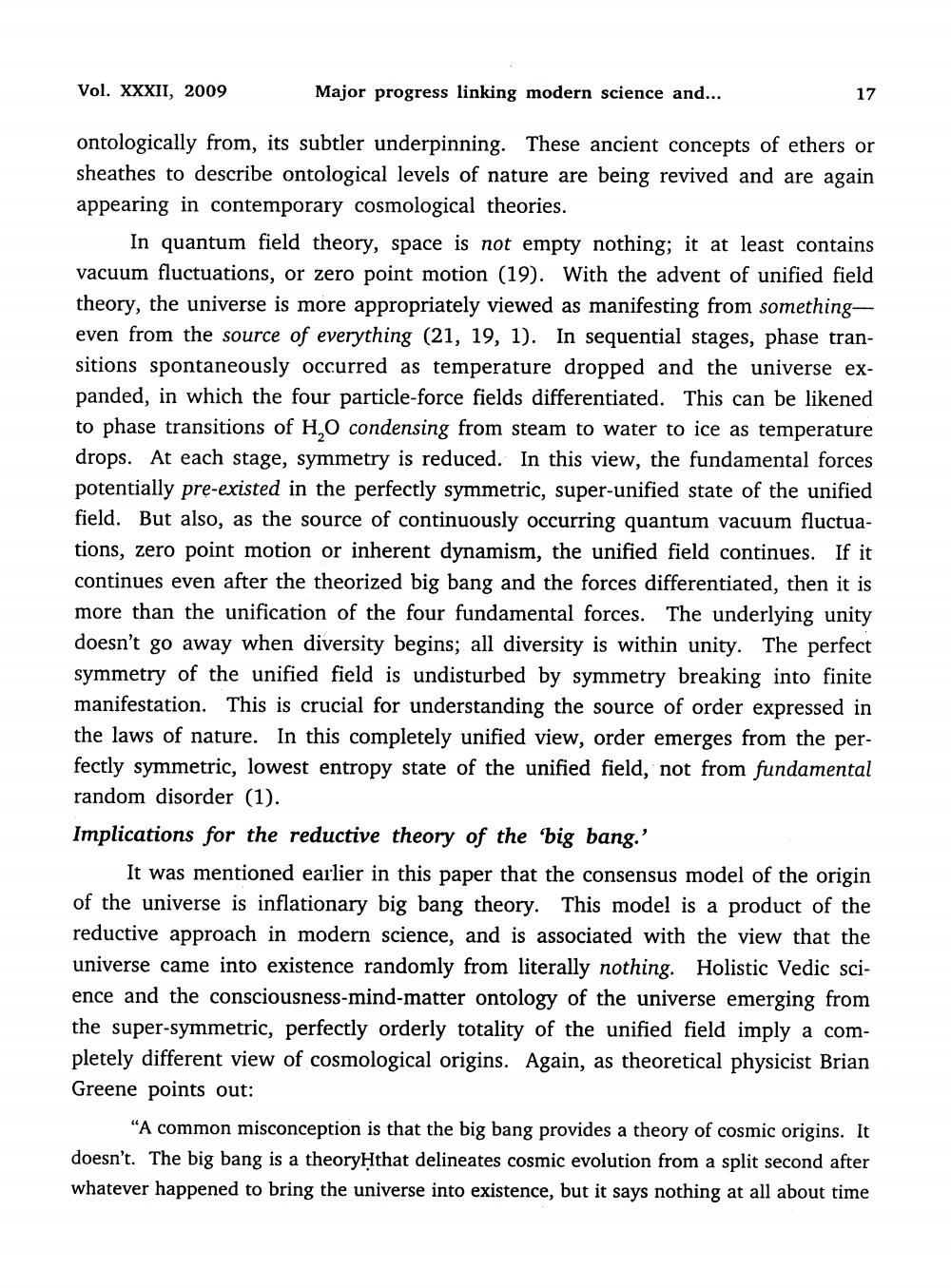________________
Vol. XXXII, 2009
Major progress linking modern science and...
ontologically from, its subtler underpinning. These ancient concepts of ethers or sheathes to describe ontological levels of nature are being revived and are again appearing in contemporary cosmological theories.
In quantum field theory, space is not empty nothing; it at least contains vacuum fluctuations, or zero point motion (19). With the advent of unified field theory, the universe is more appropriately viewed as manifesting from somethingeven from the source of everything (21, 19, 1). In sequential stages, phase transitions spontaneously occurred as temperature dropped and the universe expanded, in which the four particle-force fields differentiated. This can be likened to phase transitions of H,O condensing from steam to water to ice as temperature drops. At each stage, symmetry is reduced. In this view, the fundamental forces potentially pre-existed in the perfectly symmetric, super-unified state of the unified field. But also, as the source of continuously occurring quantum vacuum fluctuations, zero point motion or inherent dynamism, the unified field continues. If it continues even after the theorized big bang and the forces differentiated, then it is more than the unification of the four fundamental forces. The underlying unity doesn't go away when diversity begins; all diversity is within unity. The perfect symmetry of the unified field is undisturbed by symmetry breaking into finite manifestation. This is crucial for understanding the source of order expressed in the laws of nature. In this completely unified view, order emerges from the per
ctly symmetric, lowest entropy state of the unified field, not from fundamental random disorder (1). Implications for the reductive theory of the 'big bang.'
It was mentioned earlier in this paper that the consensus model of the origin of the universe is inflationary big bang theory. This model is a product of the reductive approach in modern science, and is associated with the view that the universe came into existence randomly from literally nothing. Holistic Vedic science and the consciousness-mind-matter ontology of the universe emerging from the super-symmetric, perfectly orderly totality of the unified field imply a completely different view of cosmological origins. Again, as theoretical physicist Brian Greene points out:
"A common misconception is that the big bang provides a theory of cosmic origins. It doesn't. The big bang is a theoryHthat delineates cosmic evolution from a split second after whatever happened to bring the universe into existence, but it says nothing at all about time




